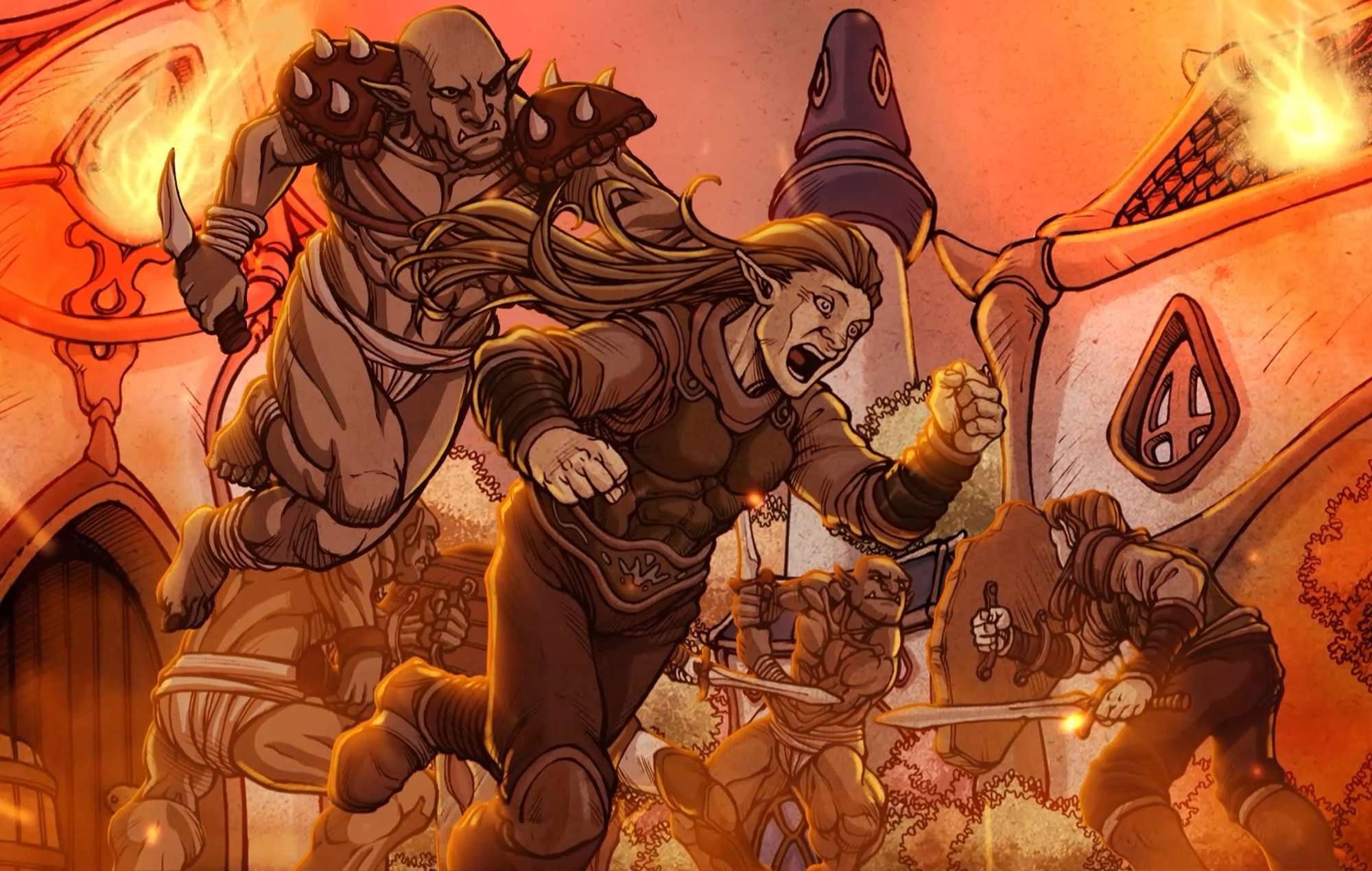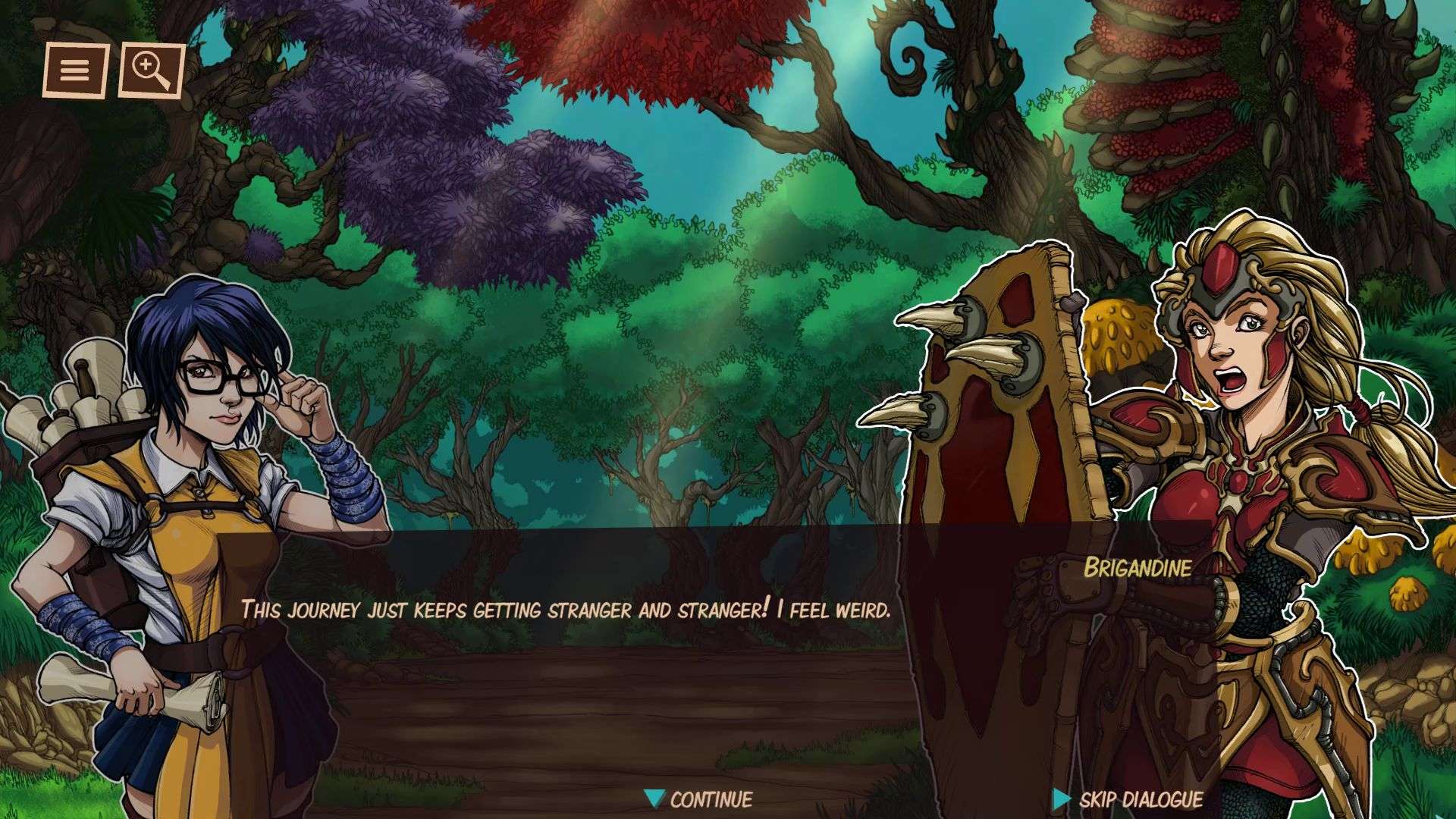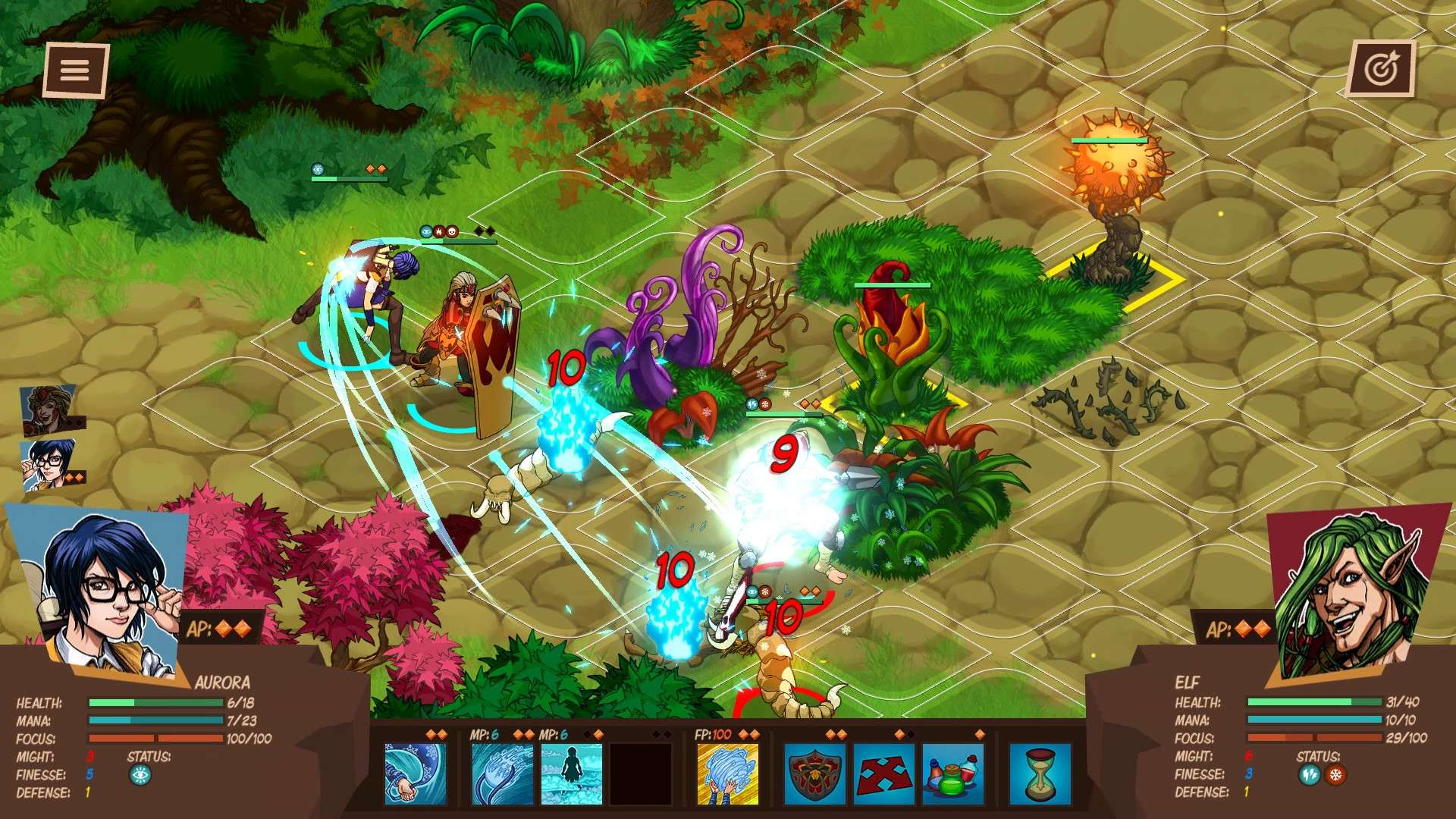
Reverie Knights Tactics PC Review
If you are looking to find more games in a specific genre then you can always look towards the indie scene to find something to fill the void. Tactical RPGs are one such genre where you get the occasional big release, such as Fire Emblem, Disgaea, or the upcoming Triangle Strategy, but it is a small selection unless you branch out to the indie developers. Plenty of small teams are forming all around the world to make video games. 40 Giants Entertainment is one such infant studio from Brazil. The studio has released their first game, Reverie Knights Tactics, a tactical RPG, which is a genre the developers have said they have a love for after playing many of the classics over their gaming years. Reverie Knights Tactics is not up there with the superb titles that inspired its creation, but it is still a jolly good 14 hours, which seems a good fit for people who do not want to invest in a 40+ hour game.
Reverie Knights Tactics is based on a Brazilian RPG universe called Tormenta that began life as a campaign using various tabletop role-playing rules. It was popular enough in its home country to spawn various tabletop RPG adaptations, a few comic books, novels, and audiobooks. This is the first time the licence has moved worldwide in a video game. Its origins become evident in its setting, as this is a world filled with goblins, elves, fairies, and other monsters that fit right into something like Dungeons & Dragons, hell, there is even a magical infused tree that has a role in the early part of the story. The themes are nothing new, so it’s down to the characters to add some flavour to the familiar setting.

Players are introduced to the world through a tutorial where an army of goblins invades the elven city of Lennórien. This is actually a dream of the leading protagonist of the game, Aurora, who is a cleric for the Order of Tanna-Toh, the Goddess of Knowledge. She is a gifted spellcaster with the ability to control ice, so she’s a cool lady who can dish out the damage, built up through her years of training and sheltered life with the Order. Aurora is requested to lead an expedition to find her missing father when he goes on a campaign to the fallen elven city to find artifacts but does not return. Clearly concerned about this, she sets out with her friend to sail across the sea to the land of the elves in the hope to find her father or at least his body to return his memories to the Order to learn about what happened. What that means for us is fighting a lot of monsters and goblins along the way.
The story, which is down to the shortness of it, feels small in scope since the areas that the heroes get to visit are forests, some secret caves, and then into the final large city. As an introduction to the world, it clearly wants to keep the focus on Aurora and her adapting to becoming a leader, following in the footsteps of her father to band the team together in times of difficulty. Due to this, the player never really gets to learn much of the history of Tormenta. Aurora’s growth does come across well, with an order and chaos system (light and dark) that can alter people’s dialogue and skills throughout the game’s story. The four characters that form up the team are entertaining to have around, too, especially Aurora’s best friend, Brigandine, who is a cheerful lady who loves to munch on any tasty food. All she can think about is when her next snack is. Fren is an elf with revenge, who is always angry and never listens, while the holy leader of the Order of Tanna-Toh, Hallaron, a magic being joins a few missions into the game, helping Aurora stay on track to becoming a good leader. There is scope to expand the world building, hinted at with a sequel, which will more than likely bring what I am talking about, but it is a shame that we could not see a hint of that here to whet our appetite. What you get to witness in this small snippet of Tormenta is all very familiar for anyone who has seen/played/read a couple of fantasy media.

Combat is set on the typical tactical grid format seen in titles like Final Fantasy Tactics. A thing to note about Reverie Knights Tactics is that due to there only being four predetermined characters, battles are focused on maximising the abilities of these four heroes. Since the developers have an idea of what should be in the arsenal of the player’s team the battles have been designed to maximise these skills. Battles have a tailored experience for players to make use of environmental hazards, elements like exploding barrels, thorn shooting poisonous plants, and falling structures that damage characters and block routes. These need to be used to get the most successful outcomes in battles and help towards completing side-objectives, which offer more cash and experience, ideal because there is only a finite amount of battles throughout the game, so no way to grind items, exp or cash.
The challenge comes in the form of keeping the characters healthy while being able to dish out the damage. Each character can only have three skills and three pieces of gear (basically stat modifiers and not weapons) so there is an element on how the player should put these to best use. A character can perform two actions per turn, although if the movement goes past the blue squares and into the yellow, then this will take up both action points. Above each skill is a diamond that signals if it will take up one of two action points, most actions will be stronger if performed taking up both action points. For example, an ice spear might do 14 damage using both action points but only do 9 when using one action point. There is no way to abuse the system in ways to force it to do two lots of single actions for extra damage, as this process automatically activates depending on the action points available. Heroes can also come together to form team attacks, up to all four characters getting involved at once to deal big damage.

It is a solid battle system that makes the player think about their positioning and actions to be efficient, which the game has to be since the heroes can only attack, defend, use items or cast one of their spells. There are no ridiculous mechanics seen in other games, such as Disgaea, in Reverie Knights Tactics. It is more grounded. One thing to note is that most battles are similar. Enemy variations are limited and most battles have objectives that are to defeat everyone. It is the sub-objectives that help add variation to the battles, as these can sometimes require the player to go out of the way to complete. There are a couple of instances where the developers switch the main objective up, such as one involving a death machine that drives down the map and deals damage while pushing characters or enemies that it comes into contact with. I can only imagine that the shortness of the game is the reason why scenarios like the above mentioned are limited. A shame, because these unique fights are exciting.
This is the part of the review where I was ready to have a go at the game for what I felt was an unusual design. When version 1.0 launched, the game did not heal the characters after battles, instead, they only healed if they managed to level up. This might not sound bad, but there are no free battles to take part in to earn money, resources, or level up characters, so potentially, there is a point where the player has not got enough money to buy healing items and could have been frozen out of progression if they did not have an earlier save. I found it peculiar that the game did not offer extra battles on the side, instead, the only thing is at the end of a victory the game offers a chance to replay the battle to get a better result, but if you decide not to do this then the battle can not be replayed.

Thankfully all my worries vanished in a recent update because what I had a problem with is no longer there, as now since the latest patch each character is fully healed after a battle. What the developers have done is moved the original idea to “Hard” mode, which is fine, as this offers the extra challenge for anyone who wants it after beating the game, but for me, it was nearly a deal-breaker until this patch. It seems quite a few people on the forums complained about this issue as well, so it was not just my take on the matter. It is good to hear the developers listening to feedback to improve the experience of the game and offering the original in another form so that it still exists. What this change did for me was make the battles more relaxing. I was willing to experiment with skills and the environmental hazards without the punishment of having to deal with low HP if it all went pear shape with my party, but I still ended up winning the battle.
One thing that stood out to me is how colourful Reverie Knights Tactics is. The story elements, the ones done in typical visual novel dialogue scenes with the character portraits and background environments, were hand-drawn with thick outlines to give it this fabulous look. A lot of detail has gone into these scenes, which is no doubt a callback to the heritage of its comic book roots. The hand-drawn art also applies to battlegrounds that the game takes place on, which does not look out of place with the vibrant character models sitting on top of it. The artists have gone for bright, rich colours that stand out, almost overly oversaturated for the character and enemy models for gameplay scenes, but it fits with the hand-drawn artwork and environments and helps in clearly seeing what is happening on the battlefield.

Animations are more elaborated than I expected in a game like this, to the point they can sometimes be too drawn out. One such character is Hallaron, who takes forever to start walking to the selected grid, but there is a button that doubles the speed of the game to help with this issue. Do not get me wrong, I think the effort the developers have gone into making sure each character has their unique animation set is worth noting, I wonder if there was a faster way of doing them to keep the game moving at a good speed. Spoiling the presentation is the lack of camera control. There are times when objects block the view of the grids and it can be hard to work out exactly where a grid is sitting behind this unseen area. The game only has the ability to zoom in and out, and even then it is only a small variation, so it seems rather worthless.
Reverie Knights Tactics does what it says on the tin. This is a tactical RPG in which its developers, 40 Giants Entertainment, have some enthralment with the genre. Its small scope means that it can focus on maximising the combat and each characters’ abilities, but the negative side of this is that most battles end up similar, with only small changes to the sub-objectives rather than the strategic focus that comes with different ways to win a fight; it could do with more variety. The shortness of the game helps mitigate the staleness, but it also means that the world-building does not get to flourish, instead, focusing more on Aurora’s character growth, leaving a taste for more once the 14 hours are over. Reverie Knights Tactics features straightforward mechanics, which might leave mega fans of the genre wanting more depth, but overall, while Reverie Knights Tactics brings nothing new to the genre, it is a fun challenge for people who enjoy tactical games.
